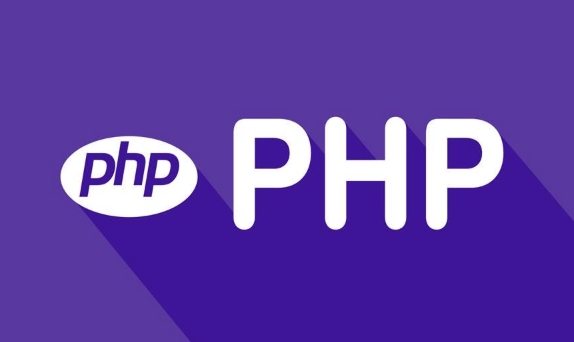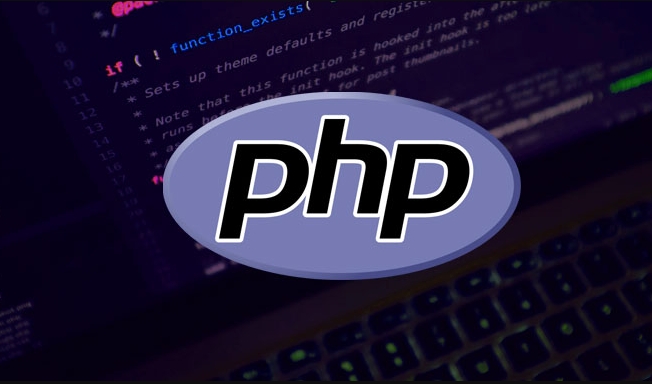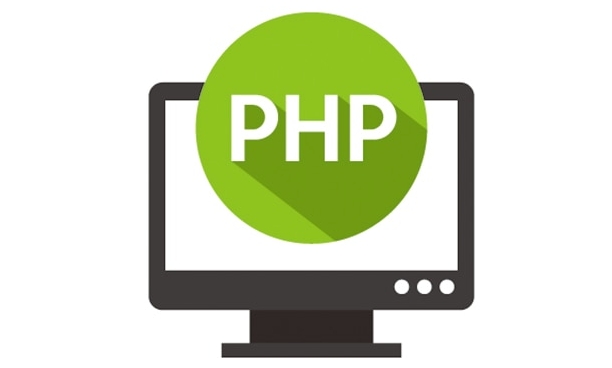The key steps to deploy the PHP framework to apply to the server include: 1. Prepare the server environment and ensure that PHP, Web server, database, Composer and necessary extensions are installed; 2. Upload code and install dependencies. It is recommended to use Git. Laravel also needs to generate keys and cache configurations; 3. Configure the web server to the entry file, both Nginx or Apache can be used; 4. Set up the database connection and run migration and seed. The entire process needs to pay attention to permission settings and log checking to troubleshoot problems.

Deploying a PHP framework to apply to a server is not complicated, but there are several key points that need to be paid attention to. Different frameworks (such as Laravel, Symfony, CodeIgniter) may differ slightly, but the overall process is roughly the same.

1. Prepare the server environment
Before starting deployment, make sure your server has the necessary running environment installed:

- PHP : Confirm whether the version meets the framework requirements (for example, Laravel 9 requires PHP 8.0)
- Web server : Nginx or Apache are both OK, depending on which one you are used to
- Database : MySQL, PostgreSQL, etc., installed according to project requirements
- Composer : for dependency management, which is dependent on by almost every modern PHP framework
- Other extensions : For example, common PHP extensions such as
openssl,mbstring,tokenizer, etc. must also be enabled.
You can check PHP version and extension via commands:
php -v php -m | grep mbstring
2. Upload the code to the server
There are several ways to do this, depending on how you manage the project:

- Use Git to clone repositories (recommended):
git clone https://your-repo-url.git /var/www/your-app
- Upload local files using FTP/SFTP
- Automatic deployment using CI/CD tools (such as GitHub Actions, GitLab CI)
After uploading, go to the project directory to execute the Composer installation dependency:
cd /var/www/your-app composer install --optimize-autoloader --no-dev
If it is a framework like Laravel, you also need to generate a key and configure a cache:
cp.env.example.env php artisan key:generate php artisan config:cache php artisan route:cache php artisan view:cache
Don't forget to set storage directory permissions:
chmod -R 775 storage bootstrap/cache
3. Configure the web server to point to the entry file
The entry file for most PHP frameworks is /public/index.php , so you need to point the root directory of the web server to this location.
If using Nginx:
Edit the site configuration file (usually located in /etc/nginx/sites-available/default or similar path):
server {
listen 80;
server_name yourdomain.com;
root /var/www/your-app/public;
index index.php index.html;
location / {
try_files $uri $uri/ /index.php?$query_string;
}
location ~ \.php$ {
include snippets/fastcgi-php.conf;
fastcgi_pass unix:/var/run/php/php-fpm.sock;
}
}Restart Nginx after saving:
sudo systemctl restart nginx
If using Apache:
Make sure that the .htaccess file exists and mod_rewrite is enabled so that the URL rewrite can work properly.
4. Set up database connection
Modify the database configuration information in the .env file to ensure that it can be connected to the database on the server:
DB_CONNECTION=mysql DB_HOST=127.0.0.1 DB_PORT=3306 DB_DATABASE=your_database_name DB_USERNAME=your_db_user DB_PASSWORD=your_password
If you are using a framework such as Laravel, remember to run the migration:
php artisan migrate
If there is seed data that needs to be imported, you can also add:
php artisan db:seed
Basically that's it. The deployment process seems to have many steps, but as long as you take it step by step, there is no big problem. Be careful to check log files (such as Nginx's error.log and framework's logs), and they provide clues when encountering problems.
The above is the detailed content of how to deploy a php framework application to a server. For more information, please follow other related articles on the PHP Chinese website!

Hot AI Tools

Undress AI Tool
Undress images for free

Undresser.AI Undress
AI-powered app for creating realistic nude photos

AI Clothes Remover
Online AI tool for removing clothes from photos.

Clothoff.io
AI clothes remover

Video Face Swap
Swap faces in any video effortlessly with our completely free AI face swap tool!

Hot Article

Hot Tools

Notepad++7.3.1
Easy-to-use and free code editor

SublimeText3 Chinese version
Chinese version, very easy to use

Zend Studio 13.0.1
Powerful PHP integrated development environment

Dreamweaver CS6
Visual web development tools

SublimeText3 Mac version
God-level code editing software (SublimeText3)
 PHP Variable Scope Explained
Jul 17, 2025 am 04:16 AM
PHP Variable Scope Explained
Jul 17, 2025 am 04:16 AM
Common problems and solutions for PHP variable scope include: 1. The global variable cannot be accessed within the function, and it needs to be passed in using the global keyword or parameter; 2. The static variable is declared with static, and it is only initialized once and the value is maintained between multiple calls; 3. Hyperglobal variables such as $_GET and $_POST can be used directly in any scope, but you need to pay attention to safe filtering; 4. Anonymous functions need to introduce parent scope variables through the use keyword, and when modifying external variables, you need to pass a reference. Mastering these rules can help avoid errors and improve code stability.
 How to handle File Uploads securely in PHP?
Jul 08, 2025 am 02:37 AM
How to handle File Uploads securely in PHP?
Jul 08, 2025 am 02:37 AM
To safely handle PHP file uploads, you need to verify the source and type, control the file name and path, set server restrictions, and process media files twice. 1. Verify the upload source to prevent CSRF through token and detect the real MIME type through finfo_file using whitelist control; 2. Rename the file to a random string and determine the extension to store it in a non-Web directory according to the detection type; 3. PHP configuration limits the upload size and temporary directory Nginx/Apache prohibits access to the upload directory; 4. The GD library resaves the pictures to clear potential malicious data.
 Commenting Out Code in PHP
Jul 18, 2025 am 04:57 AM
Commenting Out Code in PHP
Jul 18, 2025 am 04:57 AM
There are three common methods for PHP comment code: 1. Use // or # to block one line of code, and it is recommended to use //; 2. Use /.../ to wrap code blocks with multiple lines, which cannot be nested but can be crossed; 3. Combination skills comments such as using /if(){}/ to control logic blocks, or to improve efficiency with editor shortcut keys, you should pay attention to closing symbols and avoid nesting when using them.
 How Do Generators Work in PHP?
Jul 11, 2025 am 03:12 AM
How Do Generators Work in PHP?
Jul 11, 2025 am 03:12 AM
AgeneratorinPHPisamemory-efficientwaytoiterateoverlargedatasetsbyyieldingvaluesoneatatimeinsteadofreturningthemallatonce.1.Generatorsusetheyieldkeywordtoproducevaluesondemand,reducingmemoryusage.2.Theyareusefulforhandlingbigloops,readinglargefiles,or
 Tips for Writing PHP Comments
Jul 18, 2025 am 04:51 AM
Tips for Writing PHP Comments
Jul 18, 2025 am 04:51 AM
The key to writing PHP comments is to clarify the purpose and specifications. Comments should explain "why" rather than "what was done", avoiding redundancy or too simplicity. 1. Use a unified format, such as docblock (/*/) for class and method descriptions to improve readability and tool compatibility; 2. Emphasize the reasons behind the logic, such as why JS jumps need to be output manually; 3. Add an overview description before complex code, describe the process in steps, and help understand the overall idea; 4. Use TODO and FIXME rationally to mark to-do items and problems to facilitate subsequent tracking and collaboration. Good annotations can reduce communication costs and improve code maintenance efficiency.
 How to access a character in a string by index in PHP
Jul 12, 2025 am 03:15 AM
How to access a character in a string by index in PHP
Jul 12, 2025 am 03:15 AM
In PHP, you can use square brackets or curly braces to obtain string specific index characters, but square brackets are recommended; the index starts from 0, and the access outside the range returns a null value and cannot be assigned a value; mb_substr is required to handle multi-byte characters. For example: $str="hello";echo$str[0]; output h; and Chinese characters such as mb_substr($str,1,1) need to obtain the correct result; in actual applications, the length of the string should be checked before looping, dynamic strings need to be verified for validity, and multilingual projects recommend using multi-byte security functions uniformly.
 Quick PHP Installation Tutorial
Jul 18, 2025 am 04:52 AM
Quick PHP Installation Tutorial
Jul 18, 2025 am 04:52 AM
ToinstallPHPquickly,useXAMPPonWindowsorHomebrewonmacOS.1.OnWindows,downloadandinstallXAMPP,selectcomponents,startApache,andplacefilesinhtdocs.2.Alternatively,manuallyinstallPHPfromphp.netandsetupaserverlikeApache.3.OnmacOS,installHomebrew,thenrun'bre
 Learning PHP: A Beginner's Guide
Jul 18, 2025 am 04:54 AM
Learning PHP: A Beginner's Guide
Jul 18, 2025 am 04:54 AM
TolearnPHPeffectively,startbysettingupalocalserverenvironmentusingtoolslikeXAMPPandacodeeditorlikeVSCode.1)InstallXAMPPforApache,MySQL,andPHP.2)Useacodeeditorforsyntaxsupport.3)TestyoursetupwithasimplePHPfile.Next,learnPHPbasicsincludingvariables,ech






